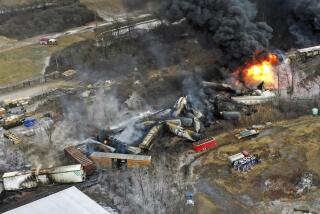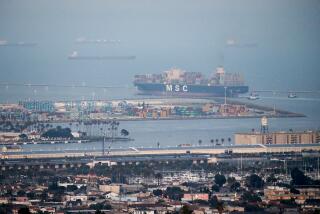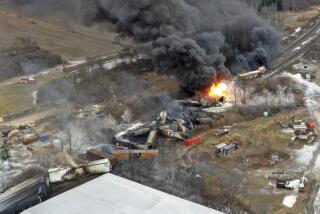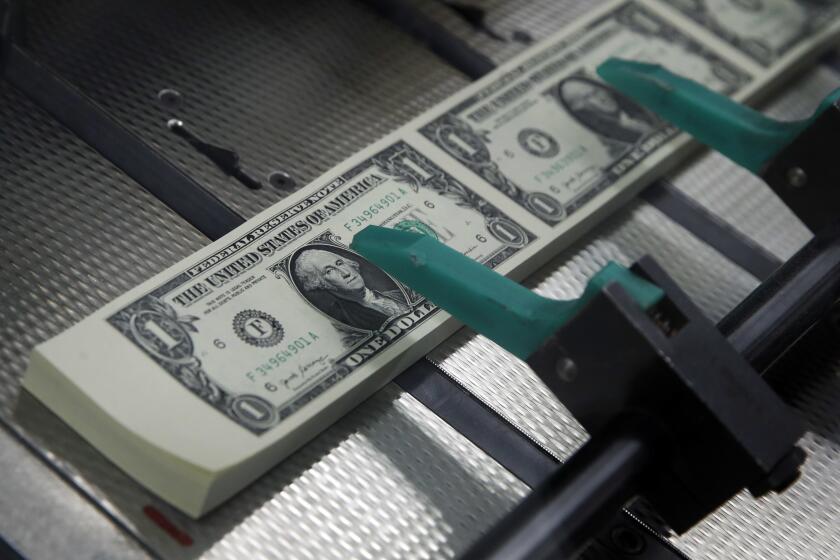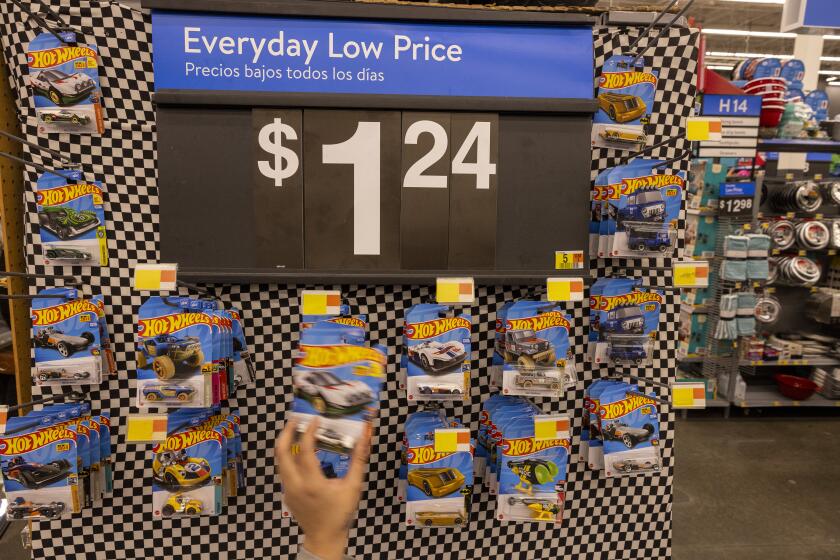Freight trains carry 20% less cargo in 2009 than in the previous year
The nation’s railroads had their worst year in decades in 2009, a dramatic reminder of the brutality with which the recession damped demand for coal, lumber and other goods that make up the backbone of the economy.
Freight trains carried 20% less cargo last year than in 2008, according to a report by the Assn. of American Railroads, and the industry shed nearly 21,000 jobs.
The 12-month period was the slowest since the association began keeping records in 1988.
Among the most dramatic declines was a 33% drop in lumber and wood products carried by train, a key indicator of demand for new construction. Trains carried 34% fewer motor vehicle parts and 8% less coal.
“Last year saw declines, most of them quite steep, in every major category of rail carload traffic,” said John Gray, senior vice president of policy and economics for the rail association. “Railroads are happy to have 2009 behind them.”
The drops in the movement of coal, lumber, retail goods and other products carried by train mirrored the devastation in the U.S. economy wrought by the housing and mortgage industry meltdowns. As demand crashed for houses, cars and the commodities used in manufacturing, so did the need to haul goods and materials.
Taken over a two-year period that included all of 2008 and 2009, the declines were even more dramatic, according to the report: a 48% drop in the transportation of motor vehicle parts; a 49% drop in metallic ore and metals; and a 47% drop in lumber and wood products.
By last month, though, the picture was beginning to brighten. Twelve of the 19 main commodities hauled by trains -- including grain, chemicals, petroleum and automobile parts -- showed growth during December compared with the same period a year earlier. The number of rail cars in storage also began to drop in December, indicating another uptick in business.
The signs of thaw reflected hopeful indications at the nation’s seaports, where traffic also increased in December. Like the increase in train traffic, imports are a sign that consumers are again buying some goods. These products -- many of them carried in shipping containers that are then bolted onto flatbed freight cars -- will travel by train and truck to destinations across the nation.
Several Wall Street analysts are predicting increased rail traffic this year as the housing and automobile industries begin to recover, increasing demand for lumber and motor vehicle parts. Demand for coal could also increase as factories begin to ramp up production.
In November, billionaire investor Warren Buffett bet big on railroads, agreeing to pay $34 billion for Burlington Northern Santa Fe Corp. The world’s second-richest man called the investment an “all-in wager on the economic future of the United States,” just a month before the industry began to show signs of recovery.
BNSF is one of the two freight lines that serve Southern California and the ports of Los Angeles and Long Beach. The other is Union Pacific Corp.
If the improvement continues, it would bring relief to the railroads, which were suffering before the economic slowdown spread to other countries from the U.S., said Rick Paterson, an air freight and surface transportation analyst for UBS Investment Research in New York.
“Transports [including railroads] were in trouble before the global recession hit,” Paterson said. “They were overexposed to the two worst parts of the U.S. economy -- the housing and automotive industries.”
Railroads such as Fort Worth-based BNSF and Union Pacific, headquartered in Omaha, will be “in much better shape in 2010” as domestic freight and international trade recover, he said.
BNSF and Union Pacific will both report their fourth-quarter and full-year earnings Jan. 21.
More to Read
Inside the business of entertainment
The Wide Shot brings you news, analysis and insights on everything from streaming wars to production — and what it all means for the future.
You may occasionally receive promotional content from the Los Angeles Times.
